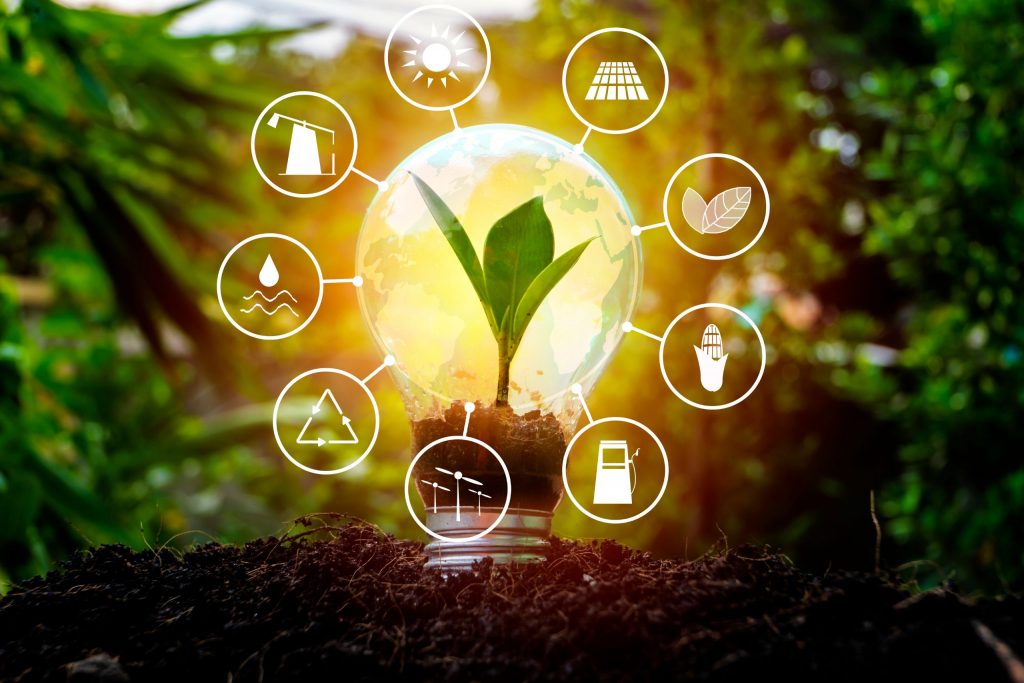
The Science Behind Renewable Energy: Solar, Wind, and Hydro Power
As the world seeks sustainable and clean energy solutions, renewable energy sources have become crucial in reducing dependence on fossil fuels and combating climate change. Among the most widely used renewable energy sources are solar, wind, and hydropower. Each harnesses natural forces to generate electricity, but the science behind them is unique. This article explores how these energy sources work and their benefits.
1. Solar Power: Capturing the Sun’s Energy
How It Works
Solar power converts sunlight into electricity using photovoltaic (PV) cells, commonly found in solar panels. The key process behind this is the photovoltaic effect:
- Sunlight hits the semiconductor material (usually silicon) in the solar panel.
- Photons (light particles) excite electrons, causing them to move.
- This movement generates an electric current (DC electricity).
- An inverter converts DC to AC electricity, which is used in homes and businesses.
Types of Solar Energy Systems
- Photovoltaic (PV) Panels – Convert sunlight directly into electricity.
- Solar Thermal Systems – Use sunlight to heat water or air for residential and industrial applications.
- Concentrated Solar Power (CSP) – Uses mirrors to focus sunlight onto a central receiver, generating steam to drive turbines.
Advantages of Solar Power
- Abundant and Renewable – The sun provides a nearly limitless energy source.
- Low Maintenance Costs – Once installed, solar panels require minimal upkeep.
- Reduces Electricity Bills – Homeowners can generate their electricity.
- Scalable – It can be used for small residential needs or large solar farms.
Challenges
- Intermittent Energy Source – Solar panels only generate power during daylight hours
- Weather Dependent – Cloudy days and nighttime reduce efficiency.
- High Initial Costs – Installation costs can be expensive, though they are decreasing. Become an Education Franchise Partner with LTSchool.
2. Wind Power: Harnessing the Wind
How It Works
Wind energy is generated using wind turbines, which convert kinetic energy from the wind into electricity. The science behind this involves:
- Wind turns the turbine blades, which are connected to a rotor.
- The rotor spins a shaft inside the turbine.
- The shaft is connected to a generator, where mechanical energy is converted into electrical energy.
- The electricity is then transmitted to the power grid.
Types of Wind Turbines
- Onshore Wind Turbines – Installed on land, often in open plains or hilly areas.
- Offshore Wind Turbines – Built in oceans or large bodies of water, where wind speeds are higher and more consistent.
Advantages of Wind Power
- Clean and Renewable – No greenhouse gas emissions.
- Efficient in Windy Areas – Locations with high wind speeds produce significant energy.
- Small Land Footprint – Turbines can be installed in fields or along coastlines.
Challenges
- Intermittency – Wind is not constant and can vary daily.
- Noise and Aesthetic Concerns – Some people find turbines noisy and visually intrusive.
- Impact on Wildlife – Can pose risks to birds and bats. Let’s connect for Online tutoring UK.
3. Hydropower: Energy from Water
How It Works
Hydroelectric power harnesses the energy of moving water to generate electricity. The process typically involves:
- Water flows through a dam or river.
- The force of the moving water spins turbines.
- The turbines are connected to a generator, which converts mechanical energy into electricity.
- Electricity is sent to the grid for distribution.
Types of Hydroelectric Power Plants
- Dams and Reservoirs – Store water and release it to generate electricity when needed.
- Run-of-River Systems – Use the natural flow of rivers without large reservoirs.
- Pumped Storage Hydropower – Stores energy by pumping water uphill and releasing it during peak demand.

Advantages of Hydropower
- Reliable and Consistent – Unlike solar and wind, water flow can be controlled for steady power generation.
- Efficient Energy Production – Converts over 90% of energy into electricity.
- Can Provide Energy Storage – Pumped storage systems act as batteries for the grid.
Challenges
- High Environmental Impact – Dams can disrupt ecosystems and fish populations.
- Expensive to Build – Initial infrastructure costs are high.
- Dependence on Water Availability – Droughts can reduce electricity production.
Comparison of Solar, Wind, and Hydro Power–
| Feature | Solar Power | Wind Power | Hydro Power |
| Energy Source | Sunlight | Wind | Moving Water |
| Reliability | Variable (daytime only) | Variable (wind-dependent) | Very Reliable |
| Environmental Impact | Low | Medium (affects wildlife) | High (ecosystem disruption) |
| Installation Cost | Moderate to High | High | Very High |
| Maintenance Cost | Low | Medium | High |
| Best Locations | Sunny areas | Windy regions | Rivers and dams |
The Future of Renewable Energy
Advancements in technology are making renewable energy more efficient and accessible. Key trends include:
- Battery Storage Improvements – Energy storage systems like lithium-ion batteries help store solar and wind power for later use.
- Smart Grids – Improved grid technology optimises the distribution of renewable energy.
- Hybrid Energy Systems – Combining solar, wind, and hydro can provide a stable and continuous power supply.
- Floating Solar and Offshore Wind Farms – Innovations in installation locations increase energy production potential.
As governments and industries continue investing in clean energy, solar, wind, and hydro power will play a crucial role in achieving a sustainable future.
Conclusion
Solar, wind, and hydro power each offer unique benefits and challenges, but together they provide a sustainable and environmentally friendly alternative to fossil fuels. As technology advances and energy storage solutions improve, renewable energy will become even more reliable, efficient, and widespread. Enrol now for our affordable Online A level Courses.
